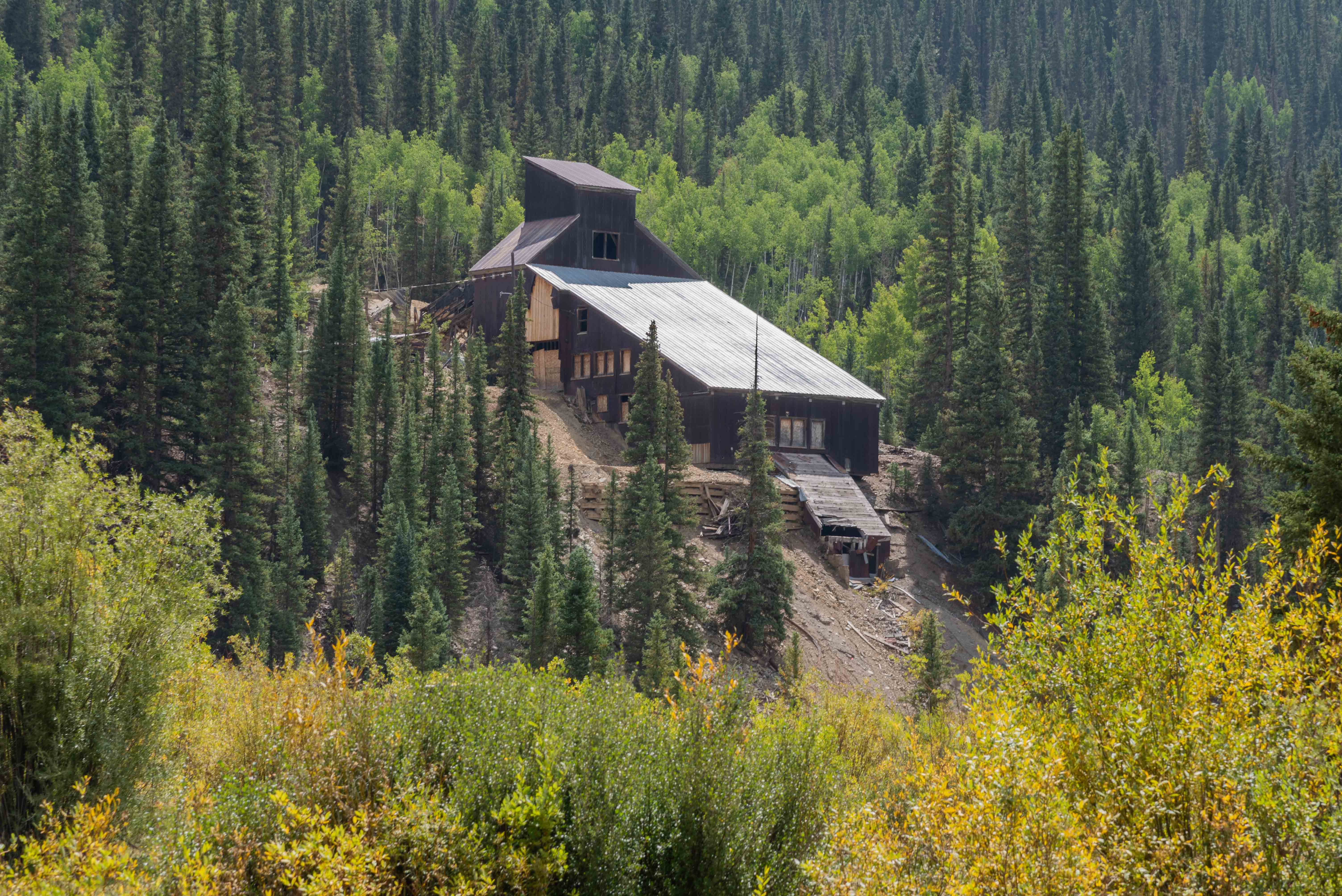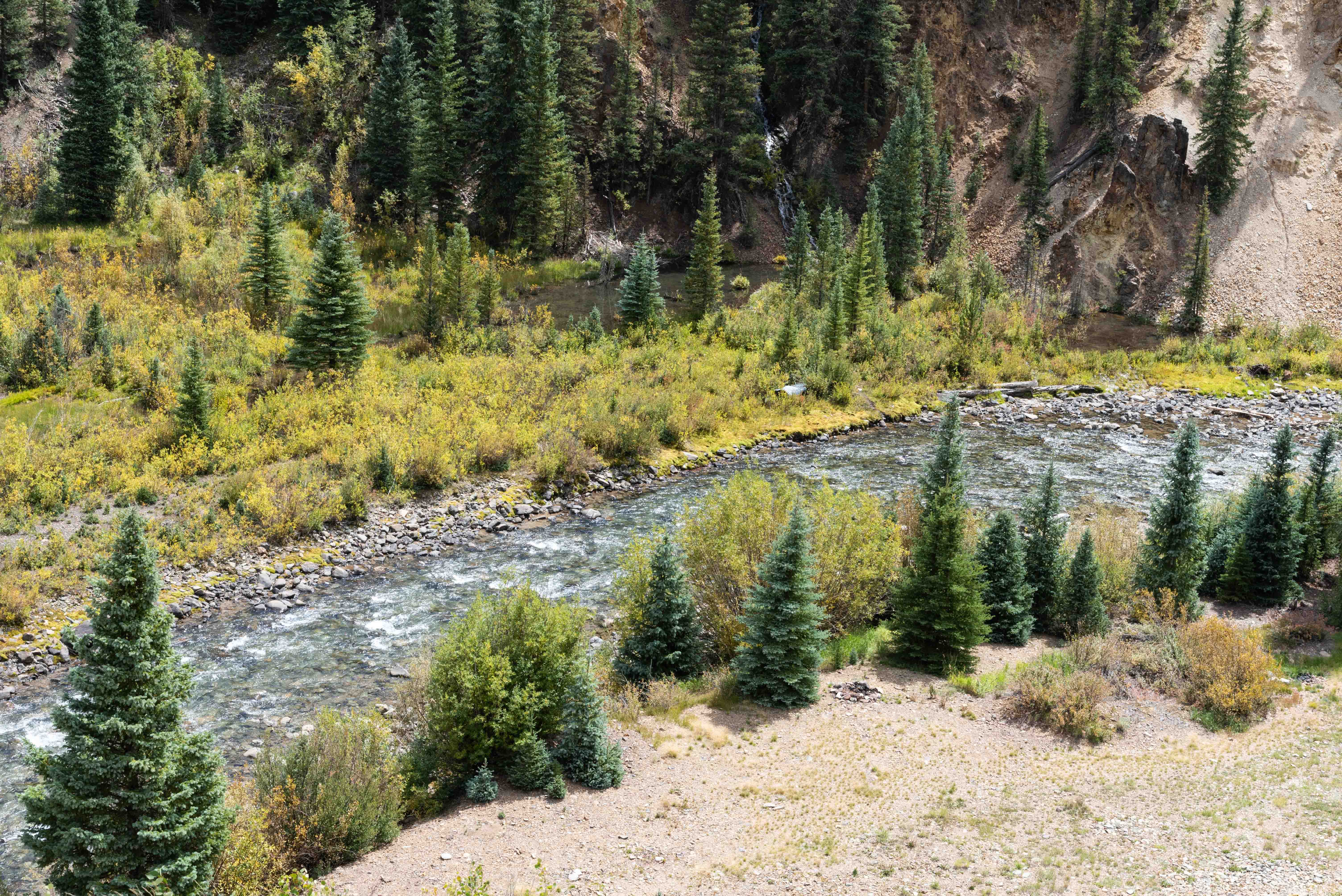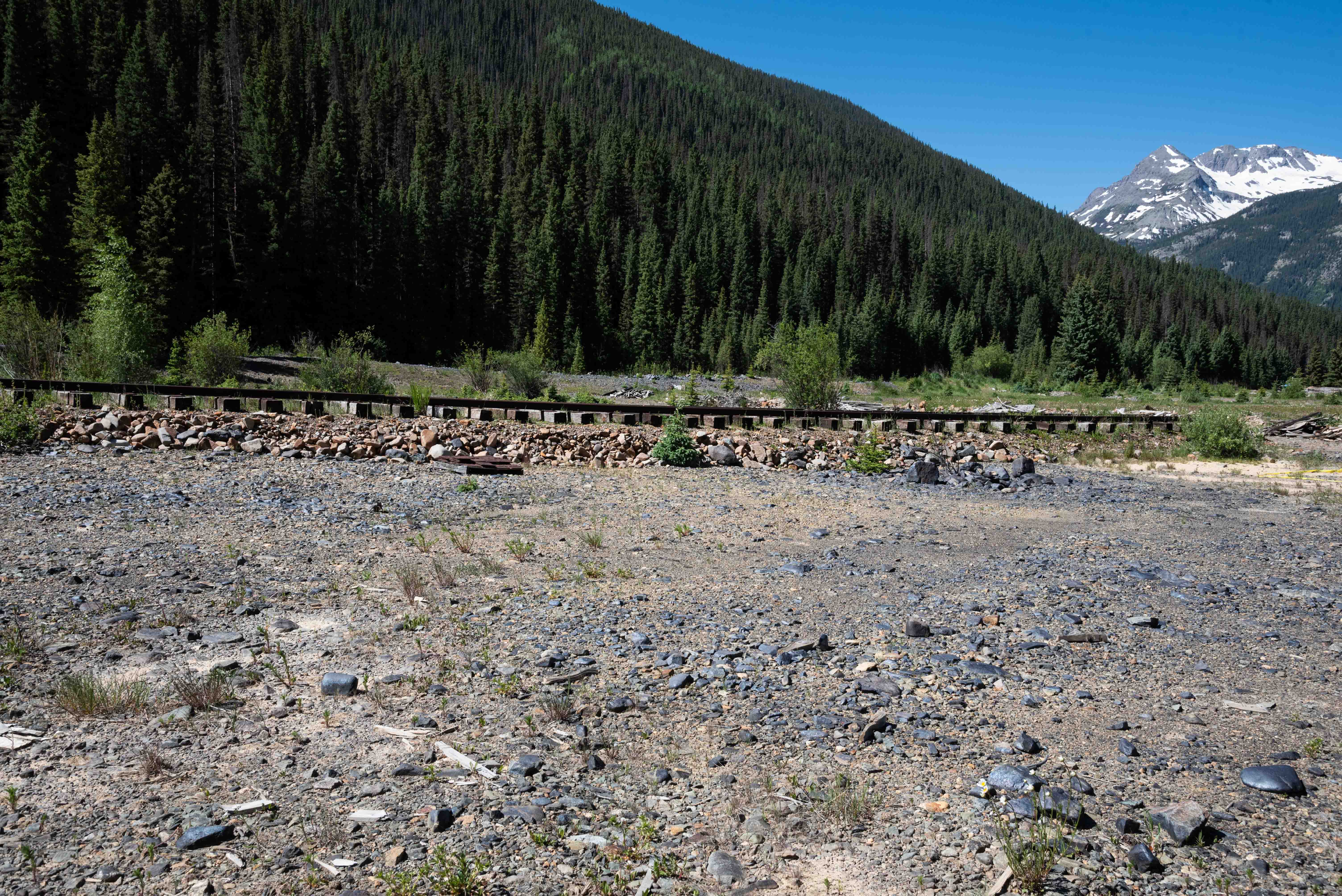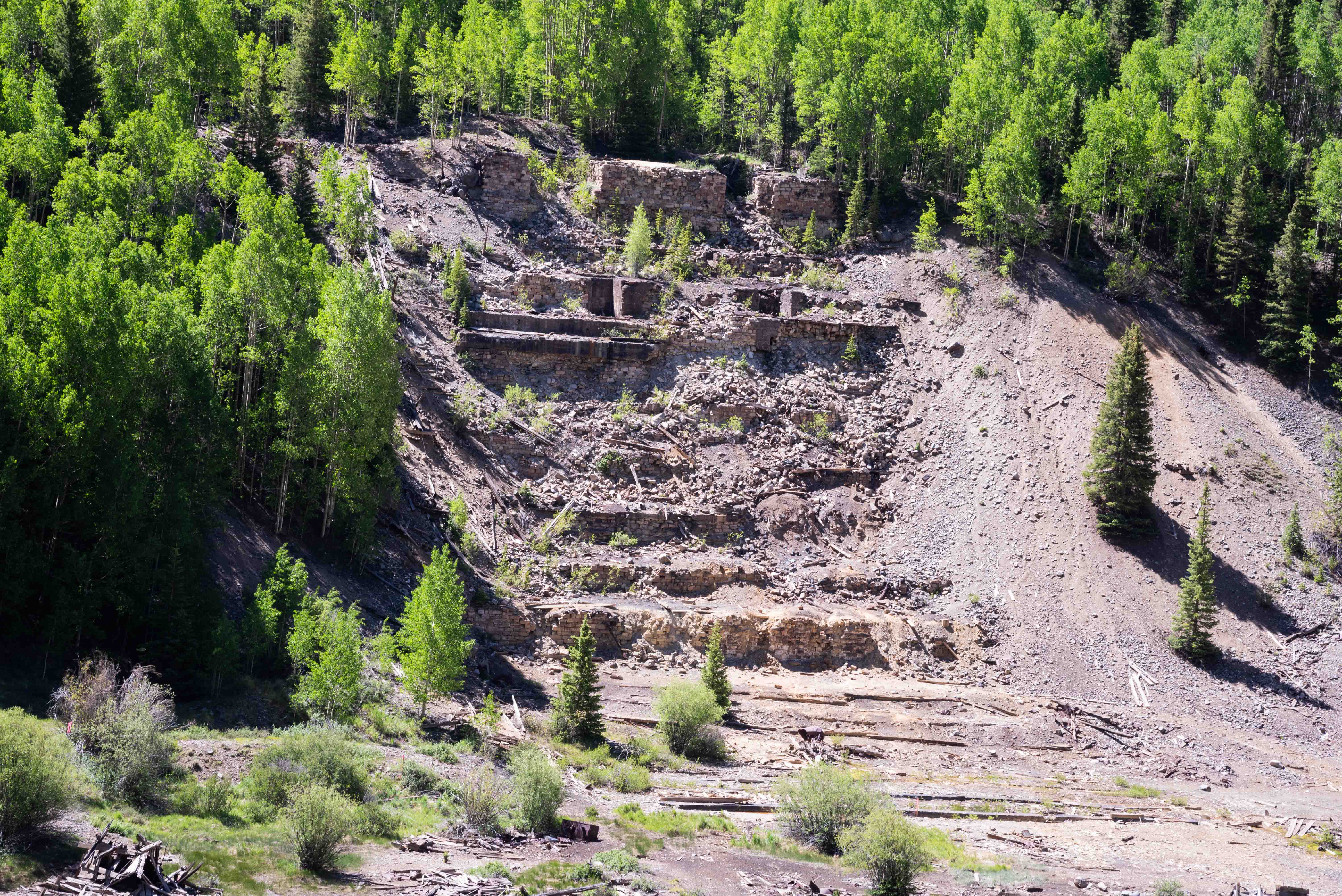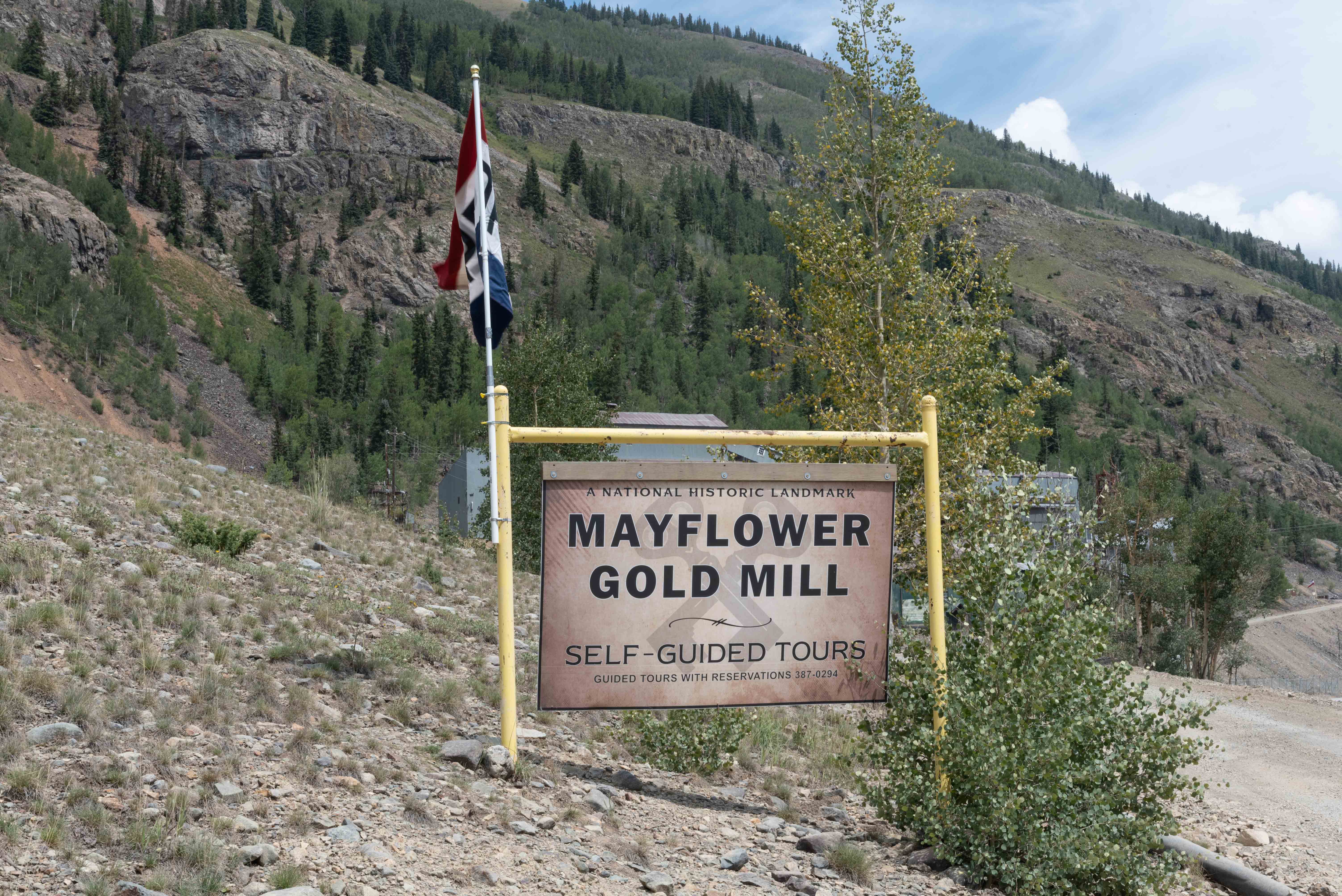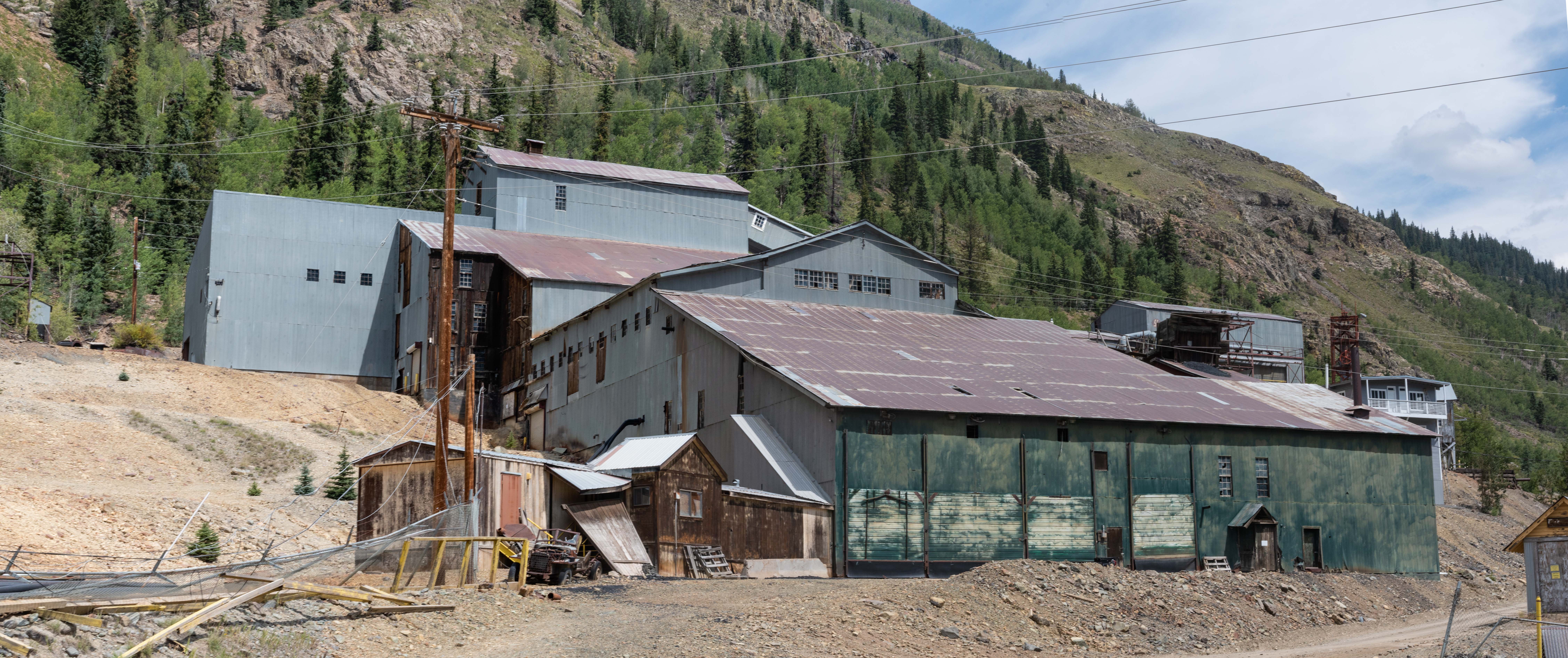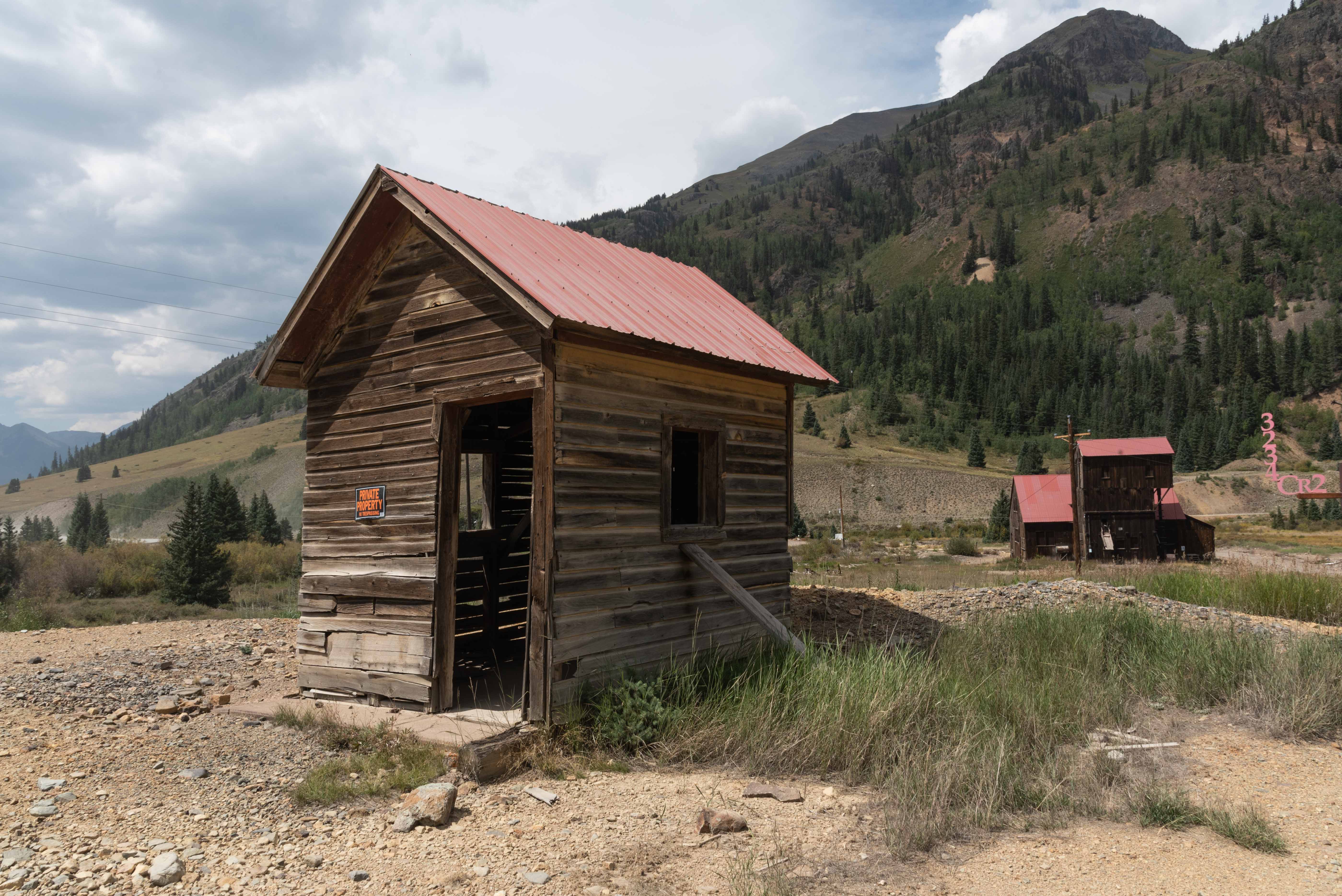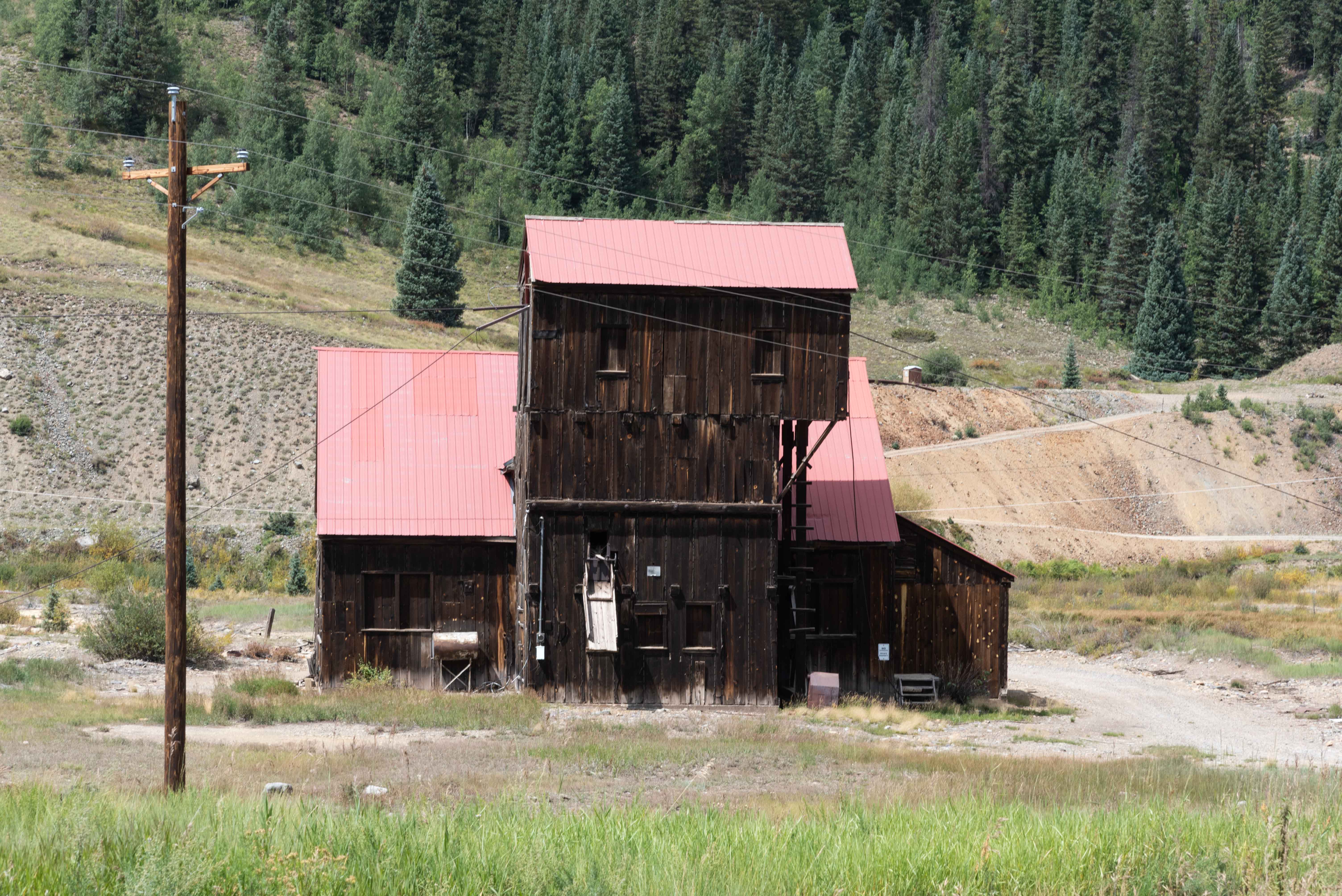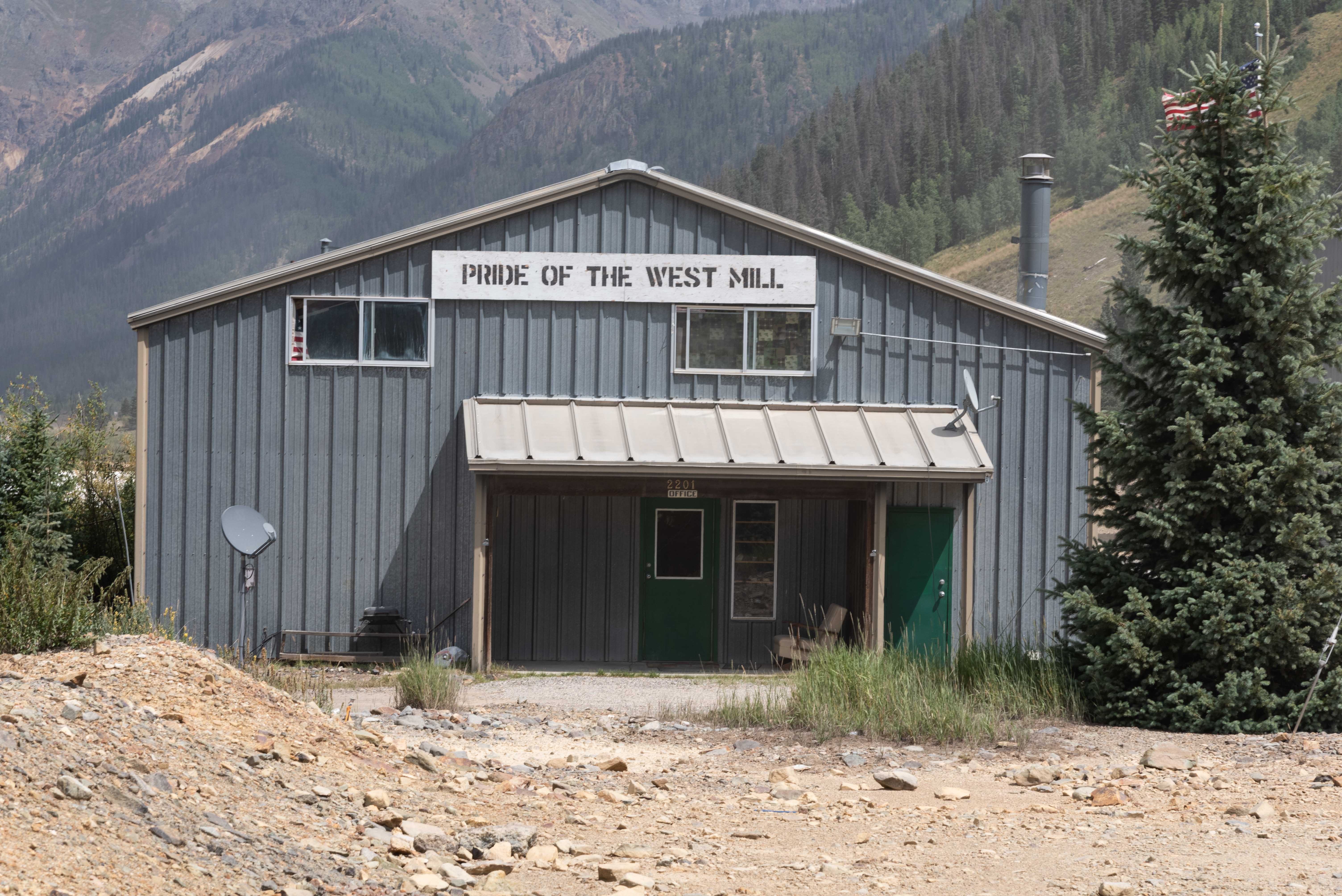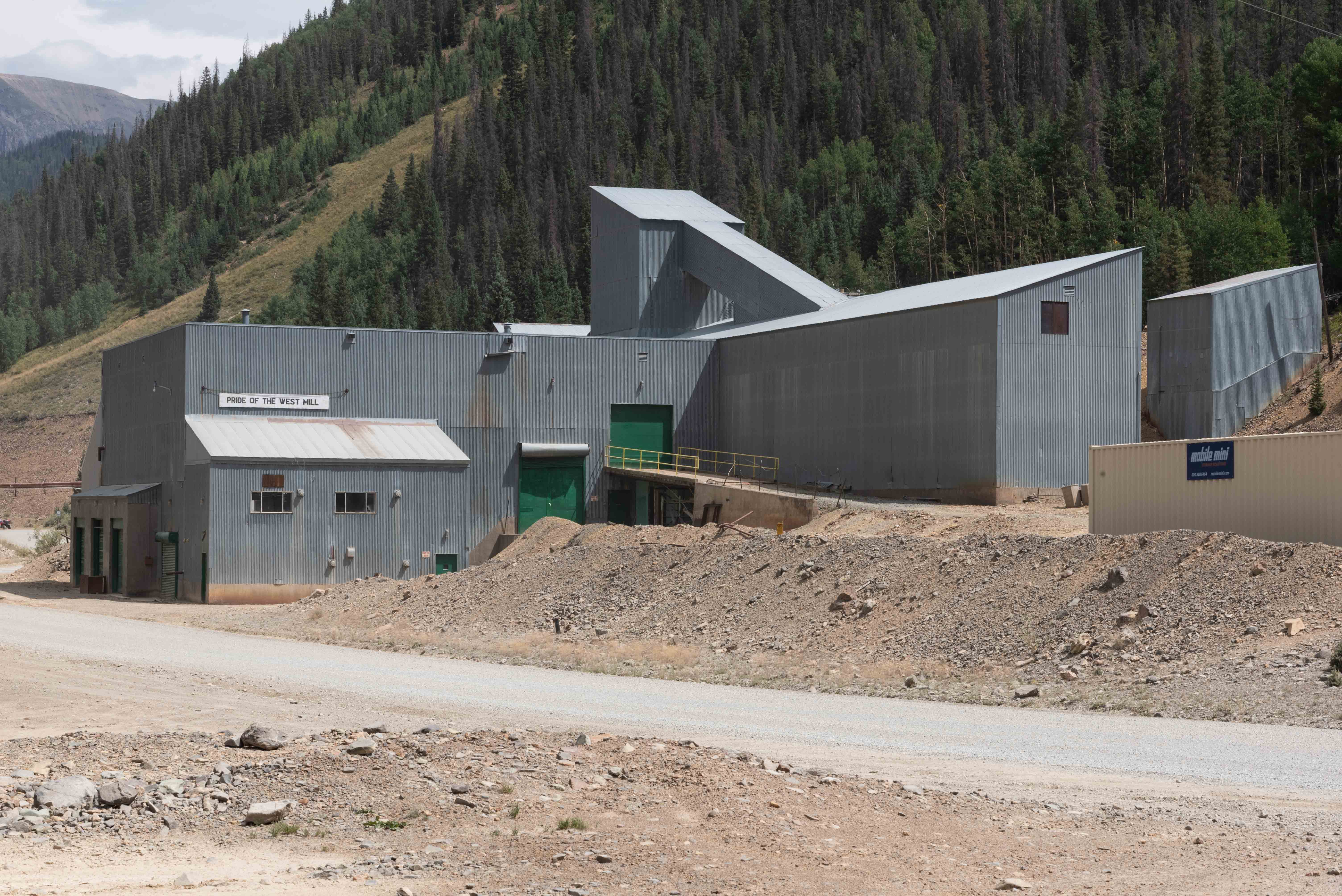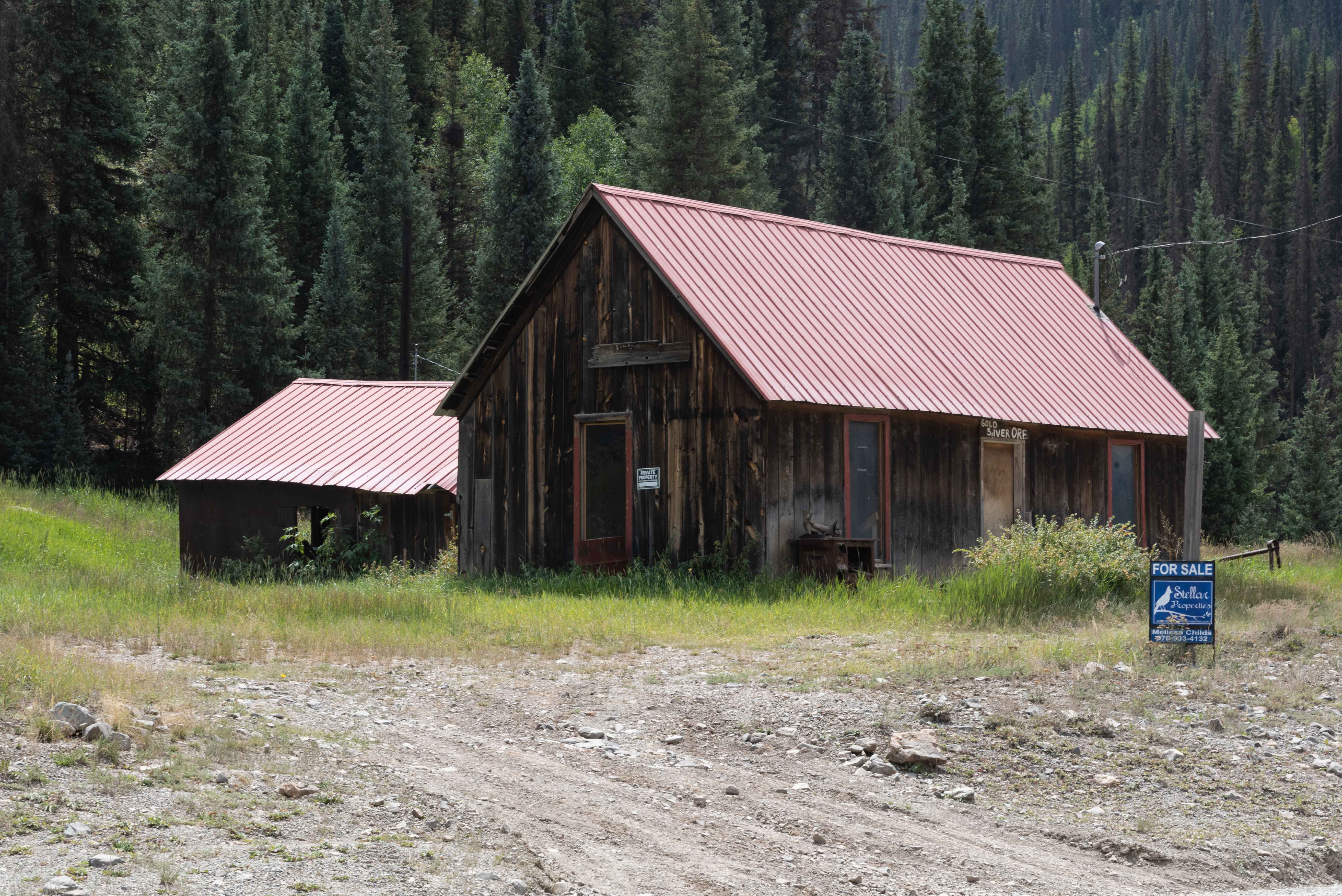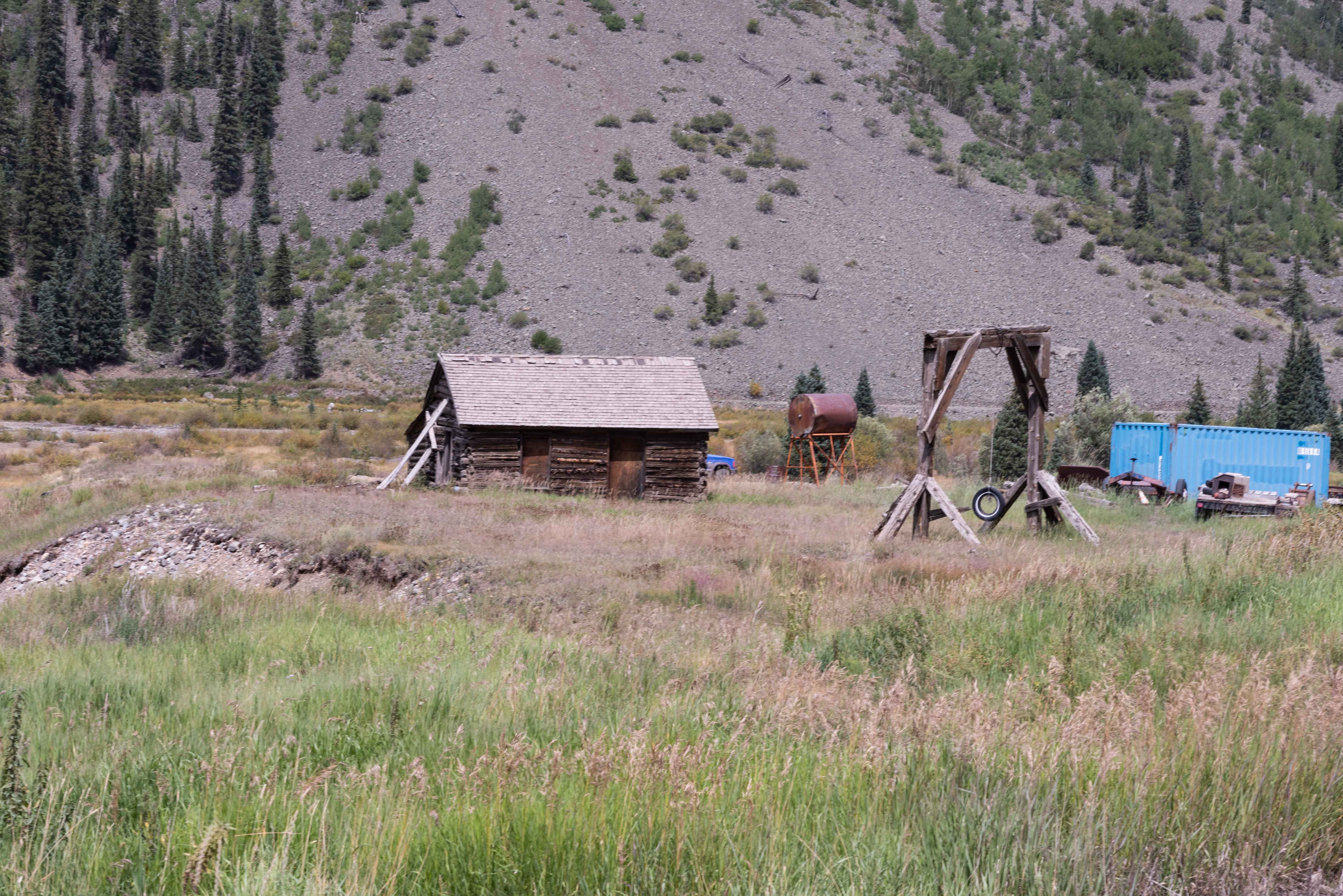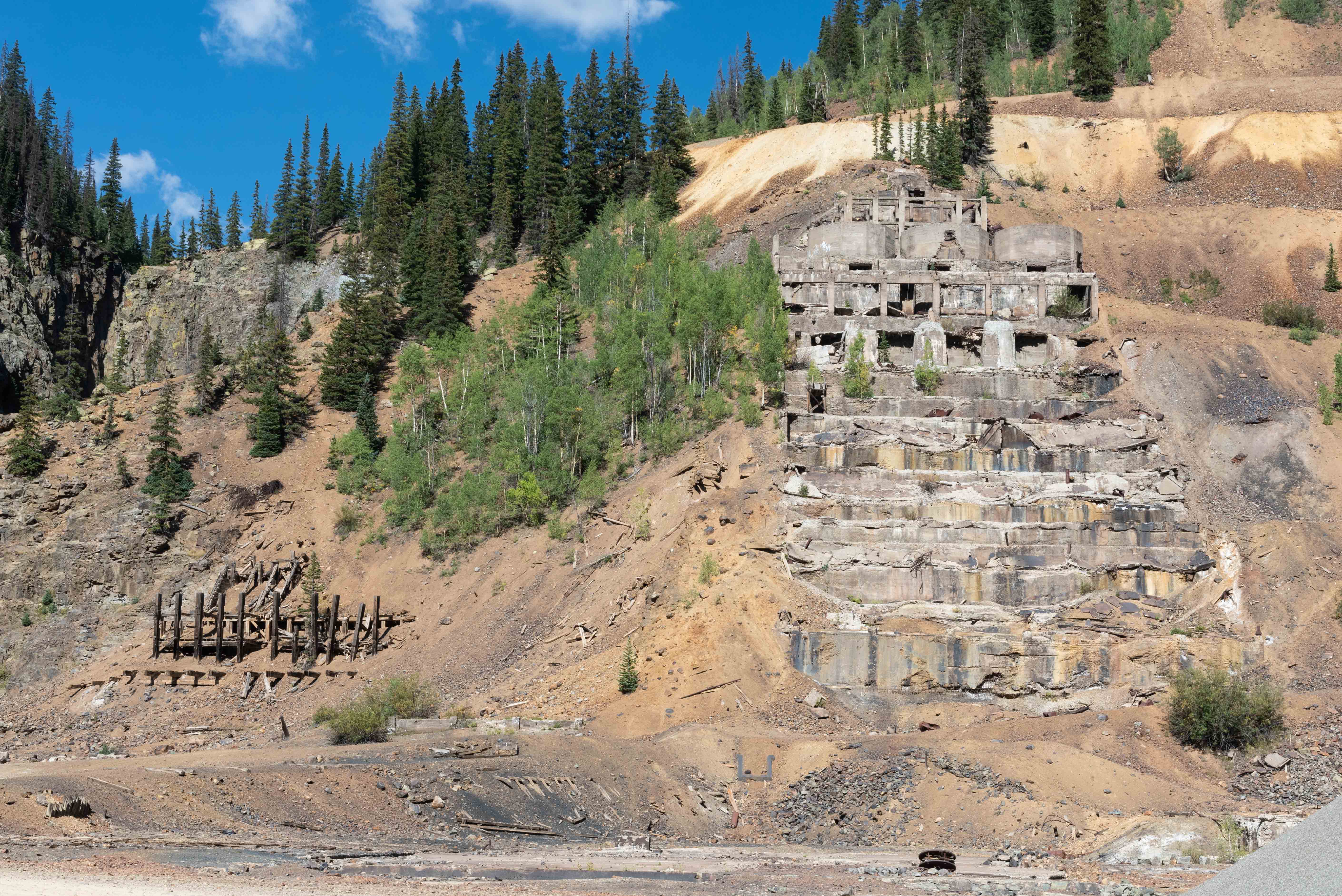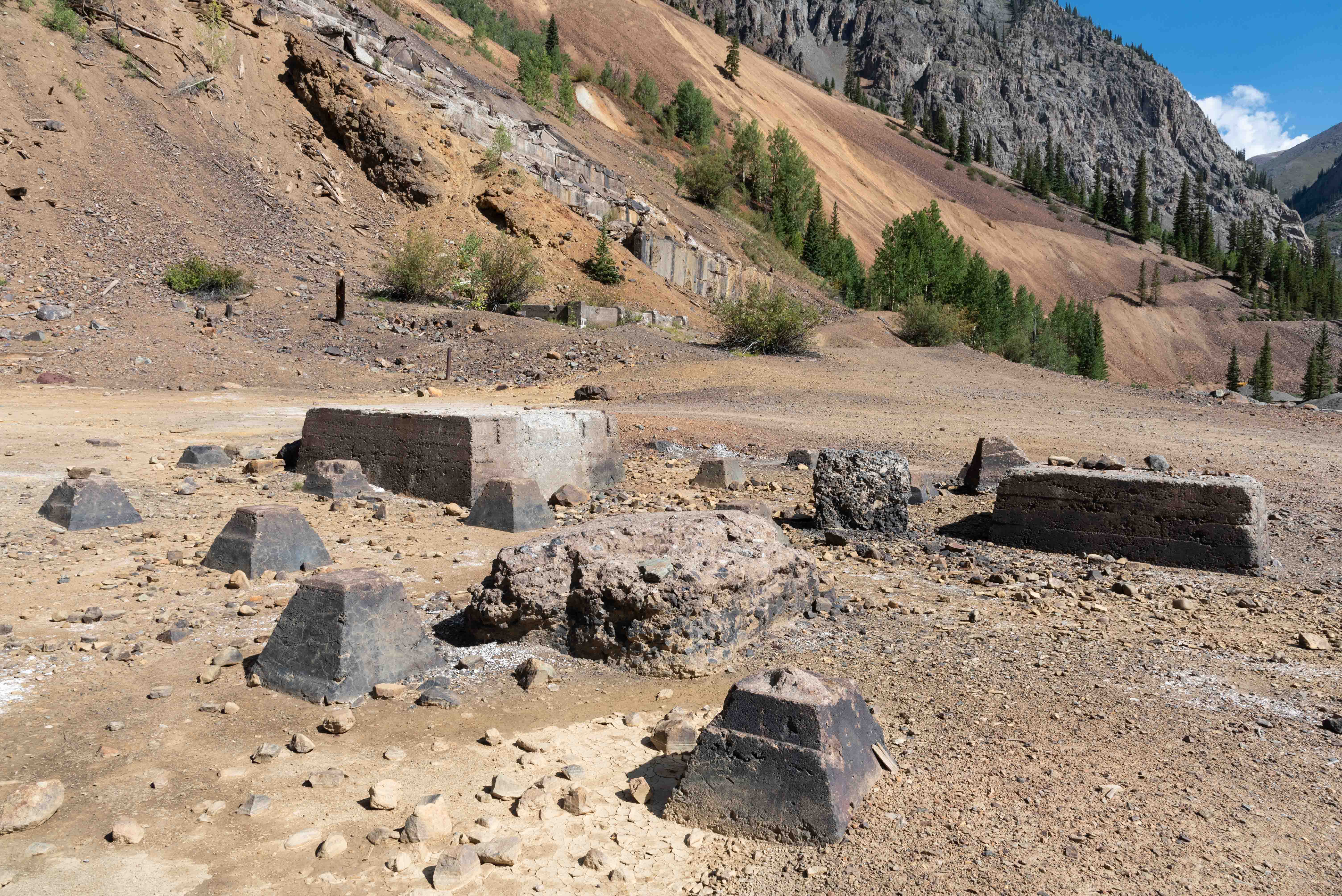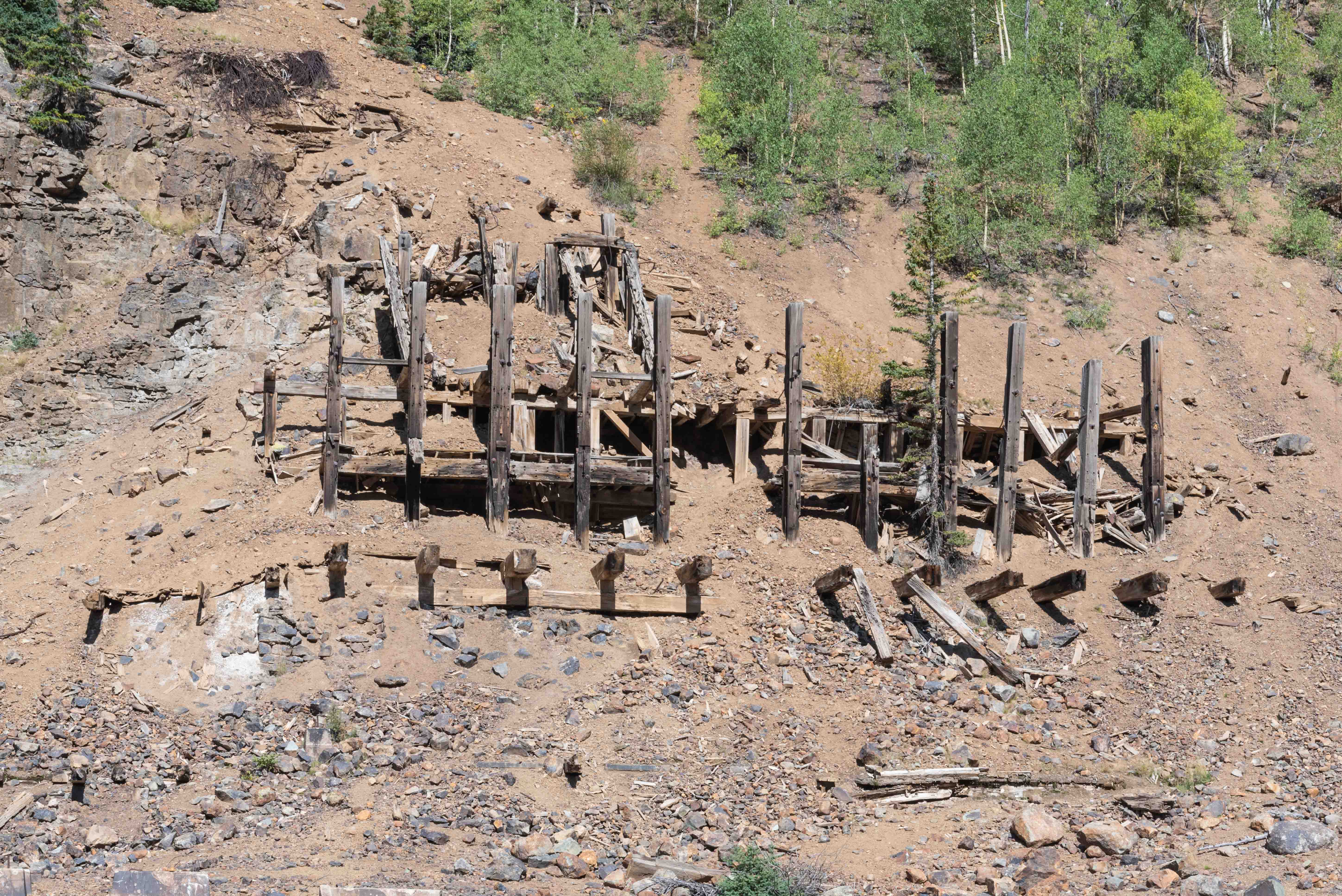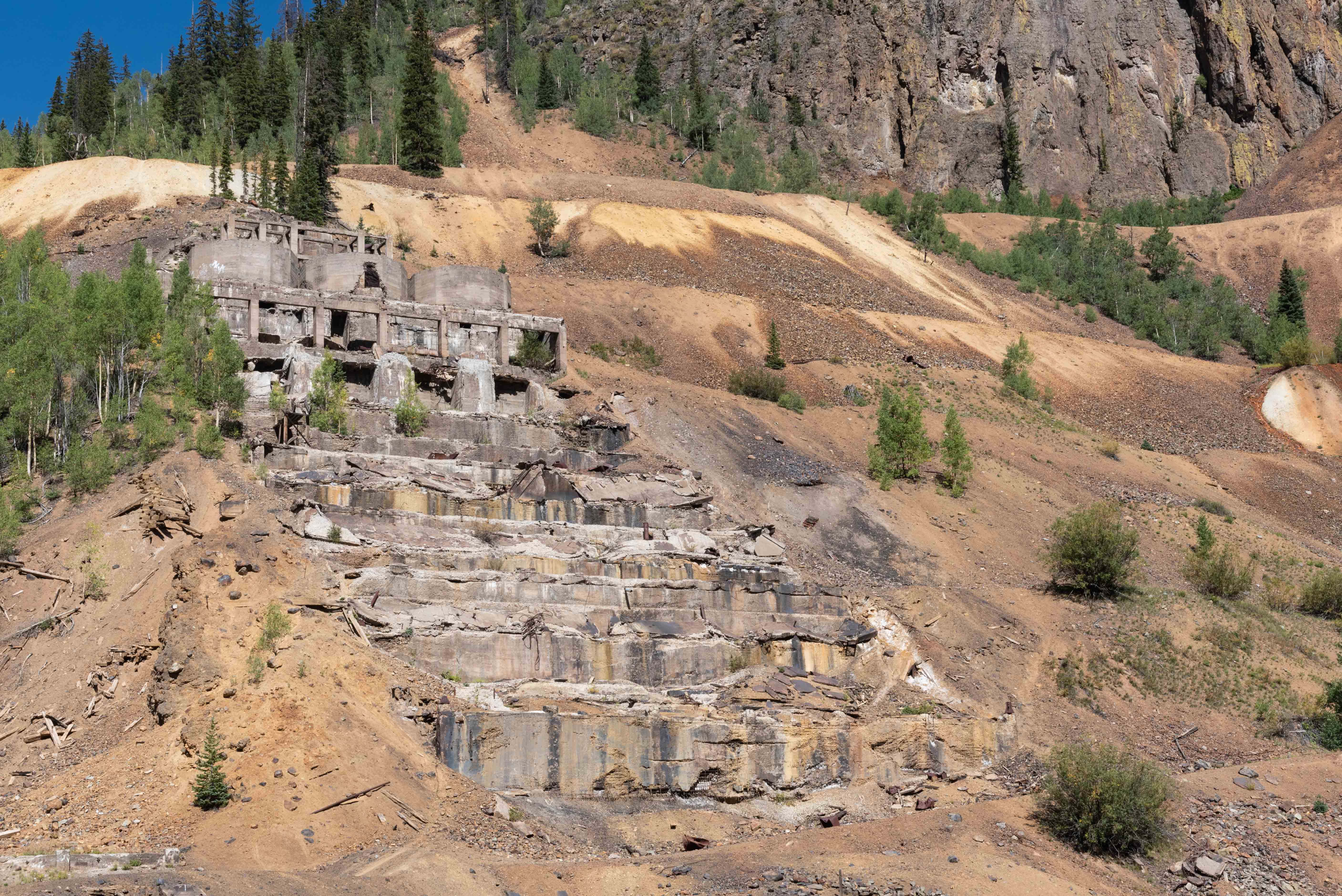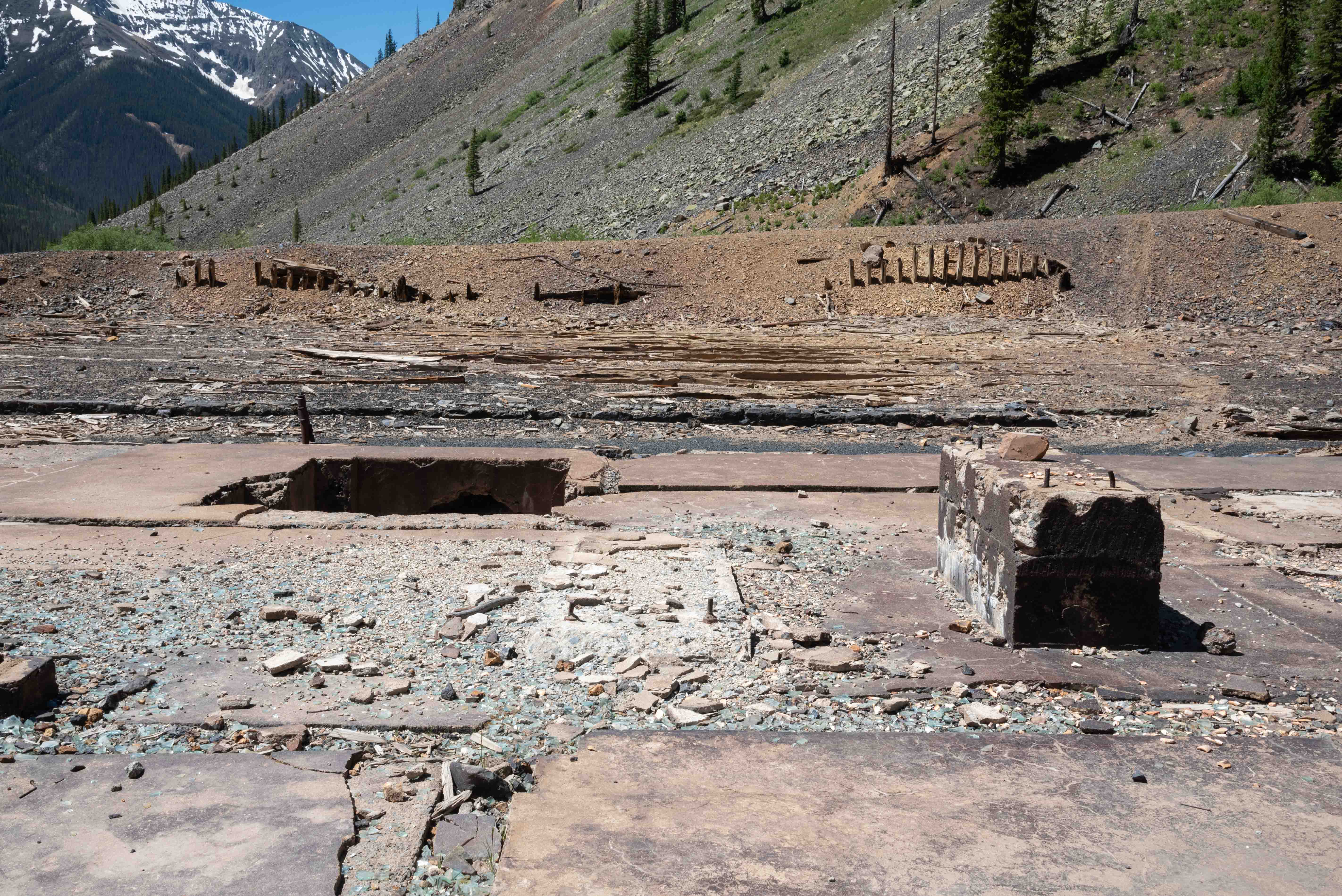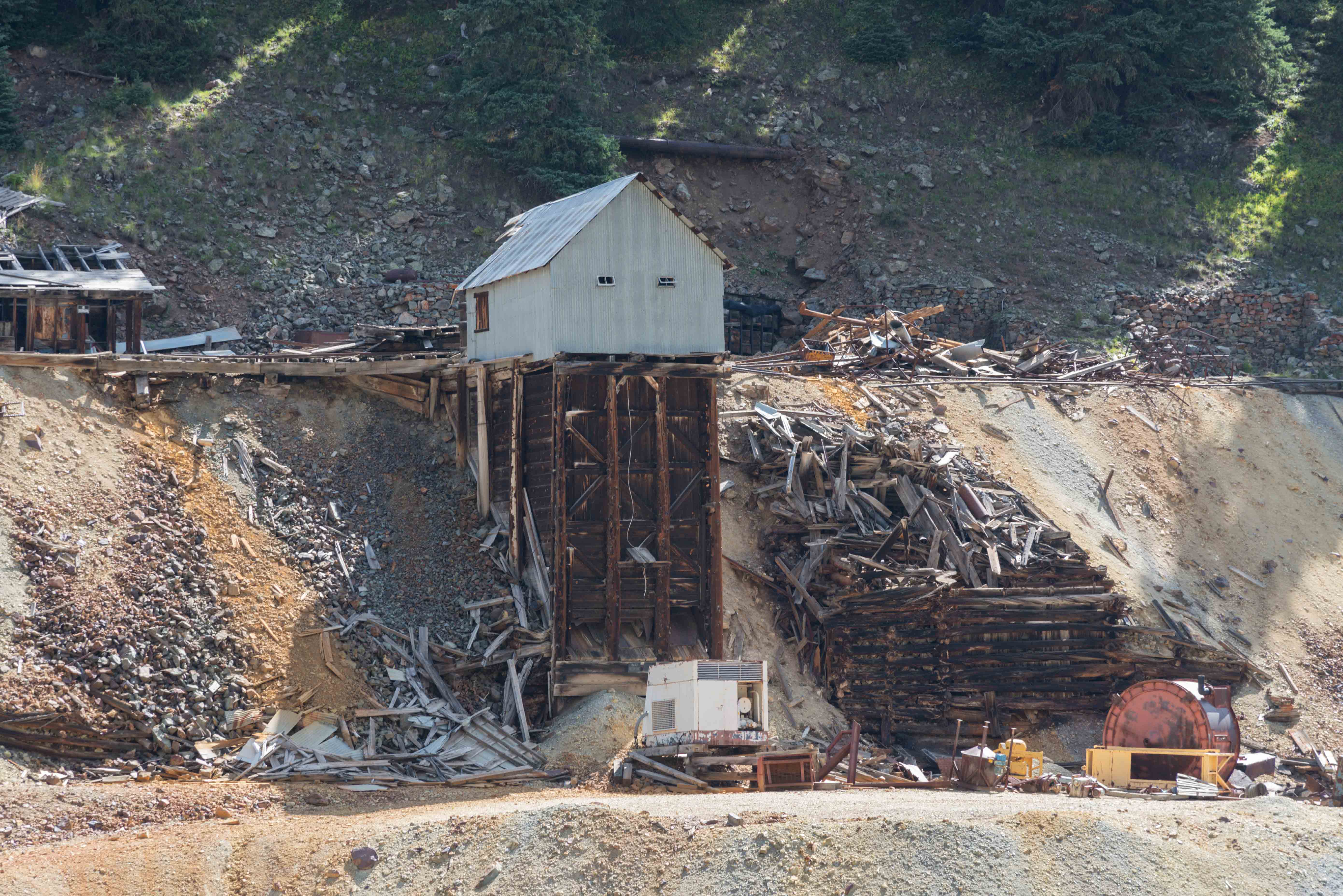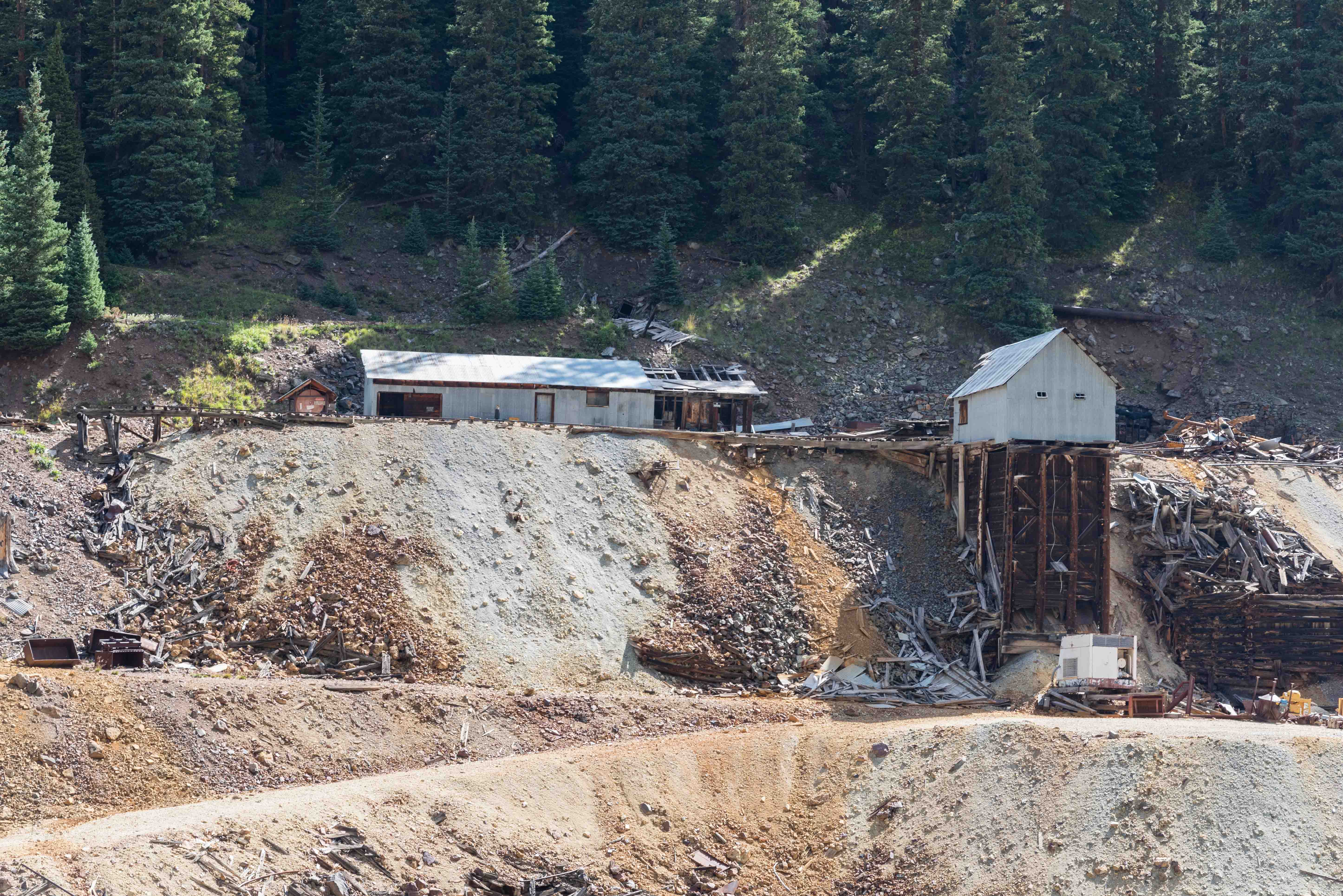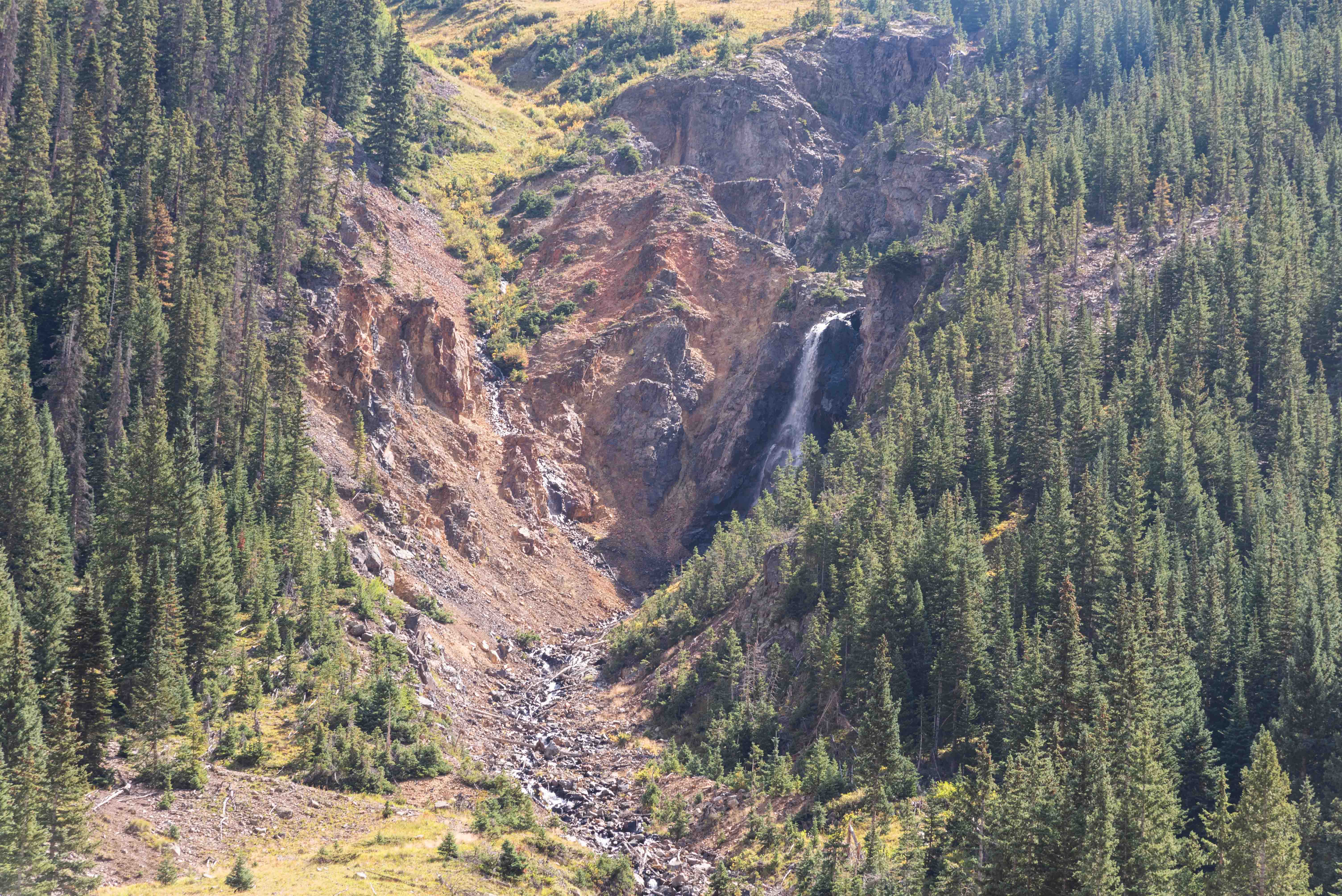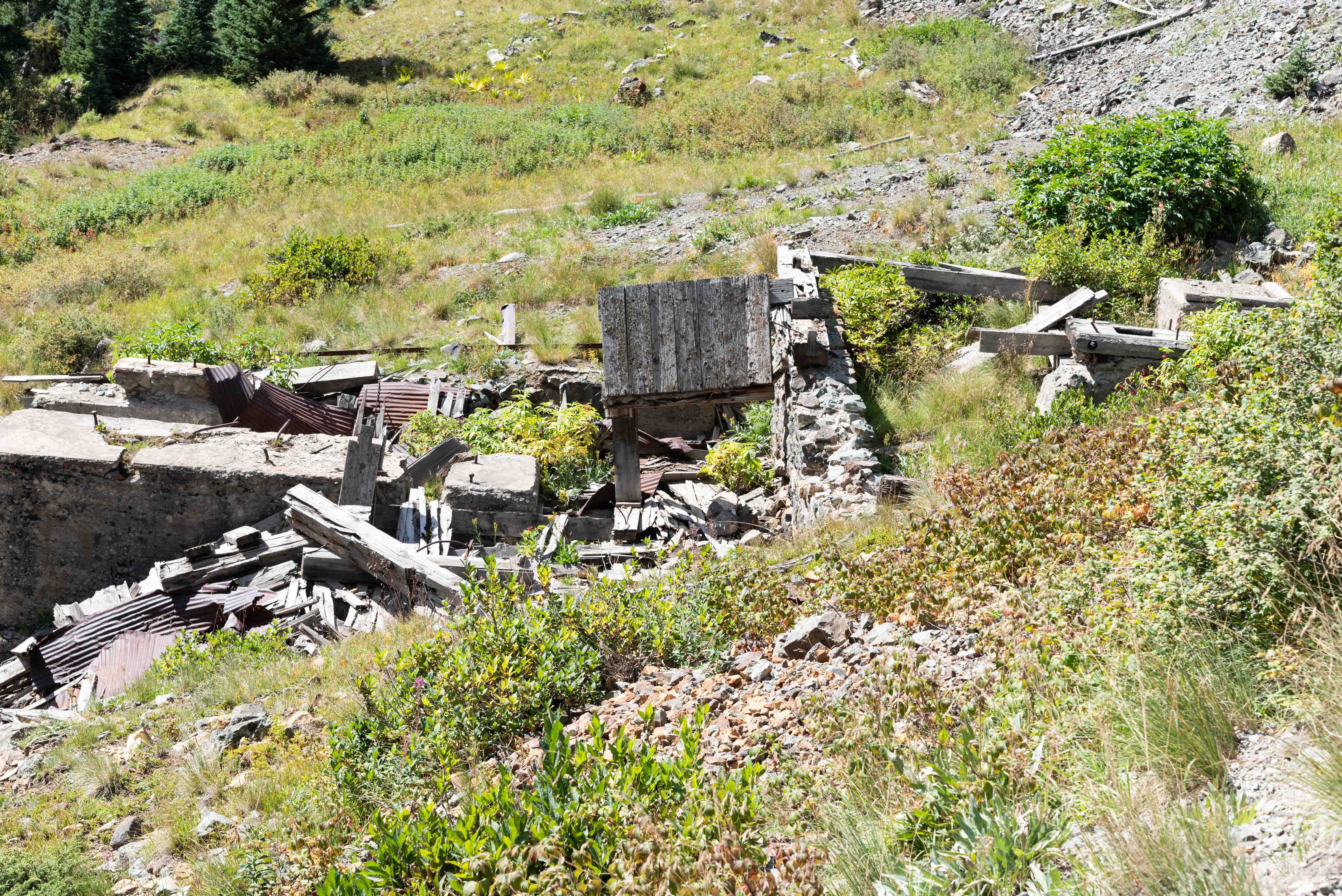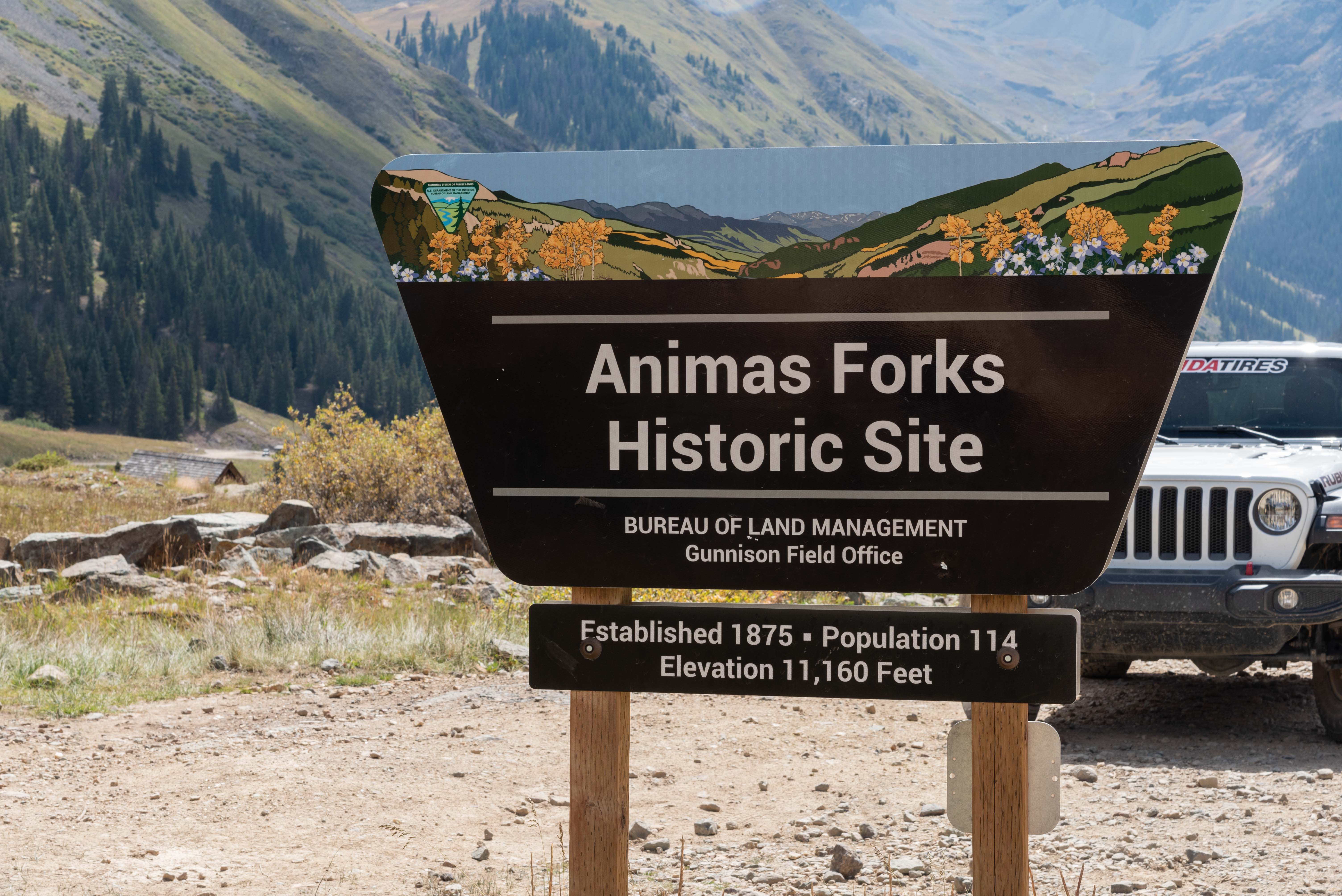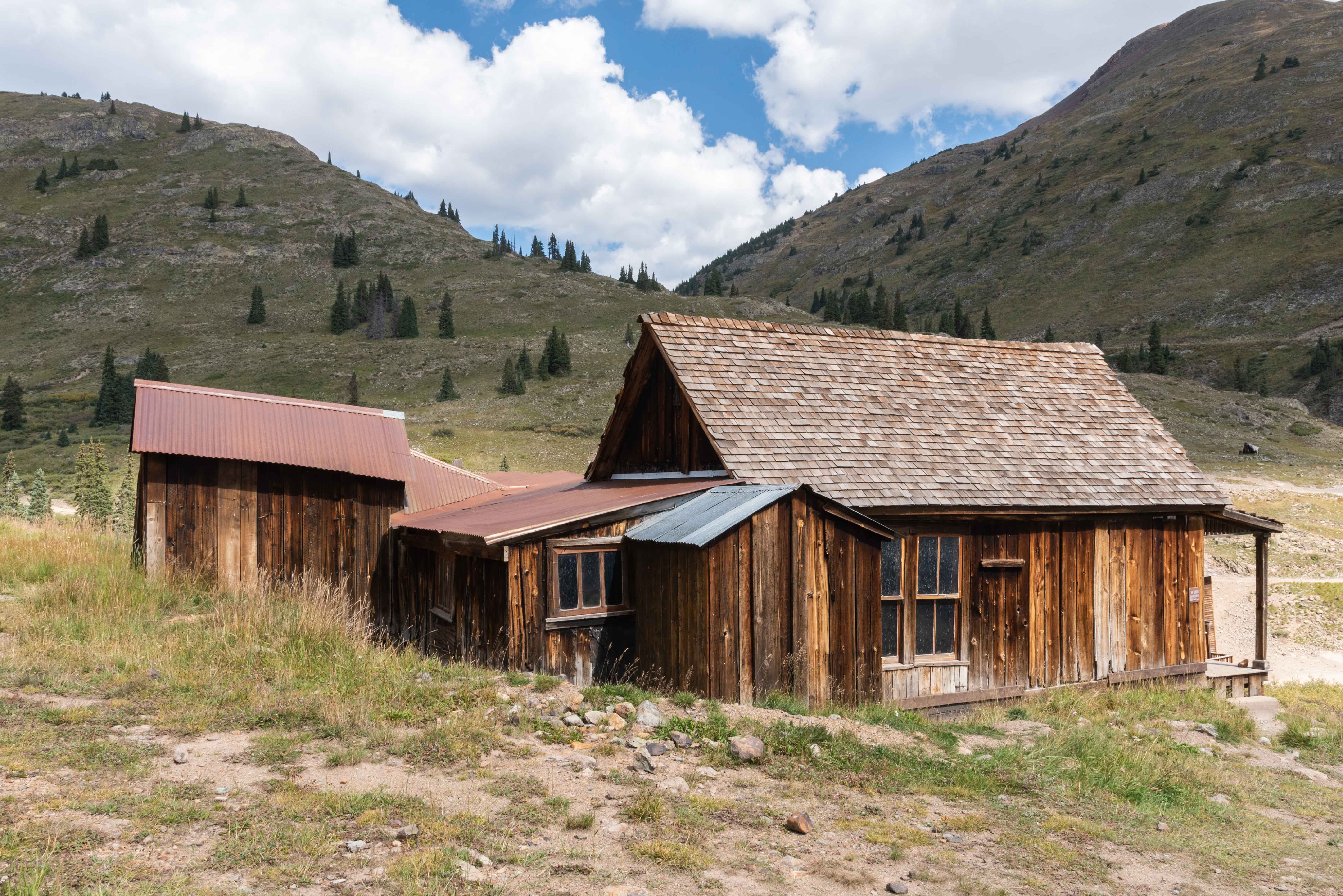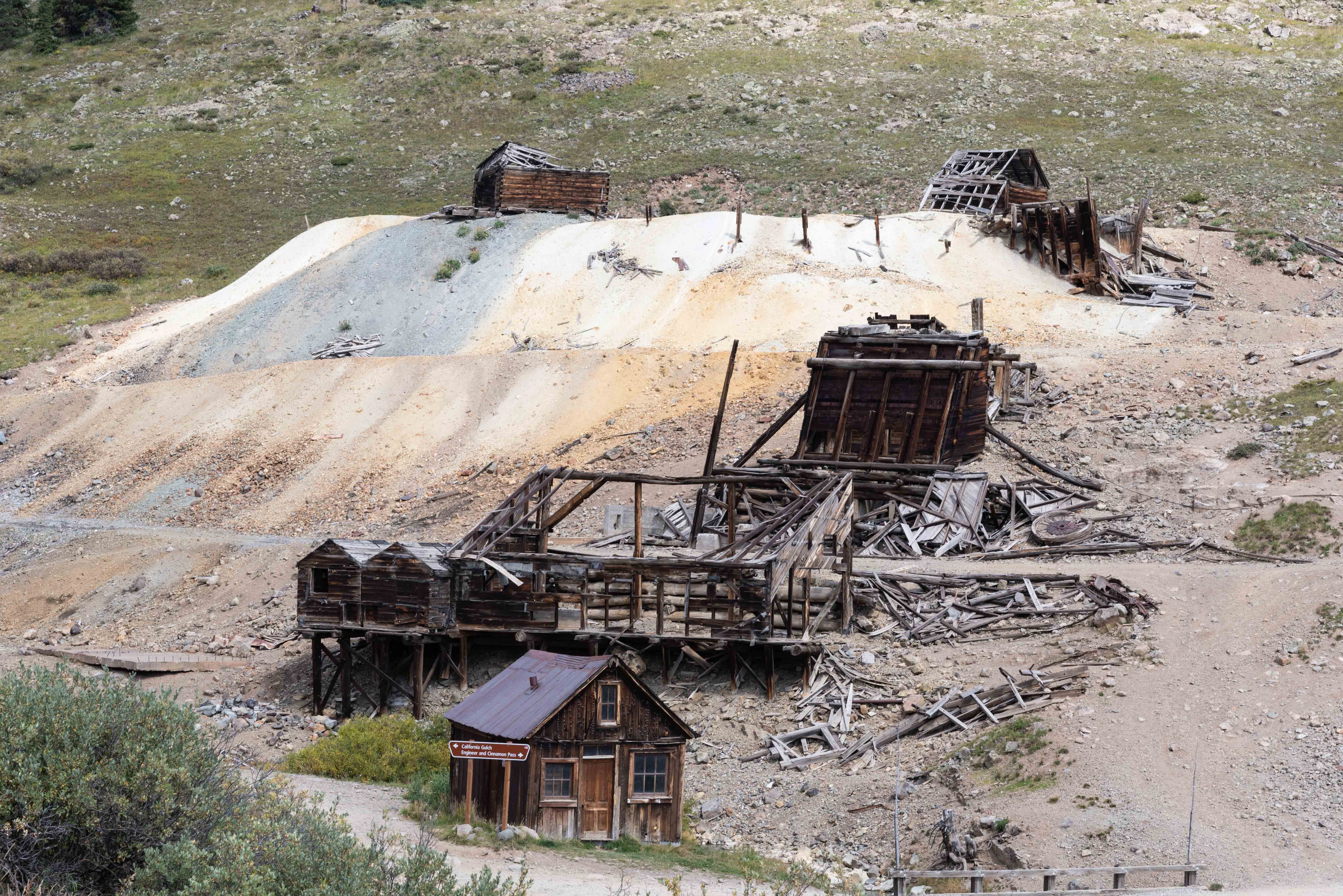San Juan County Road 2 and the Las Animas Mining District
San Juan County Road 2
runs from Silverton to Engineer Pass on the Alpine Loop. We will only drive as far as Animas Forks for this trip, a distance of about 12 miles.
CR 2 is a dirt and gravel road that parallels the Animas River for most of its length.
It can be driven in most any vehicle, but there are a few gnarly sections and it's
a lot more fun in a 4-wheel drive vehicle. There are several campgrounds along the way, and access to
popular four-wheel-drive roads such as Burns Gulch, Maggie Gulch, Picayne Gulch, California Pass, and Engineer and Cinnamon
Passes (the Alpine Loop).
San Juan CR 2 travels through the heart of the historic Las Animas Mining District. The district was active from the middle 1870s through the early 1900s,
with hundreds of mines, dozens of mills, and 4 or 5 boom towns. CR 2 passes through the old mining towns of Howardsville, Eureka, and Animas Forks.
We should include Silverton as well. Lackawanna, Silver Lake, Mayflower, Sunnyside, and Gold Prince mill sites are also located along the route.
The Lackawanna Mine and Mill are located near Silverton (0.45 mile) just above the Silverton Lakes RV Resort.
The Lackawanna Mine is an underground mine that produced lead, zinc, copper, silver, and gold. The mine had a checkered past, and never was a big producer.
The Lakawanna Mill is located a short distance downhill from the mine just east of the Animas River at coordinates
37°48'35"N, 107°38'54"W. A tram line operated from the mine to the mill. Much of the mill site was cleaned up in 2016 by crews from
the BLM and the city of Silverton.
Silverton Northern Railroad
1.36 miles from Silverton to Silverton Northern Railroad track. The Silverton Northern narrow guage Railroad was
built by Otto Mears to service the mines and mills of the Las Animas Mining Distric. The line was
originally projected to run from Silverton to Lake City, but only made as far as Animas Forks, which it reached in 1896.
The railroad was gradually shut down during the 1930s, with the last of its equipment sold to the US Army and rails
torn up in 1942. All that remains are a few sections of narrow gauge track.
Silver Lake Mill
The remains of the Silver Lake Mill are 1.98 miles from Silverton just across the Animas River from CR 2 near the Mayflower Mill.
The mill was designed and built by Edward Stoiber in 1900. Otto Mears provided direct rail service to the mill. In addition
to the mill, the complex included a tram terminal that received and crushed ore from Stoiber's Silver Lake Mine,
ore receiving bins, an electrical powerhouse, shop buildings, and a boarding house.
Mayflower Mill
Two miles from Silverton to Mayflower Gold Mill turnoff. Construction of the mill began in the spring
of 1929 under the direction of Charels A. Chase, and was completed in six months. The mill started
processing ore in February of 1930. Operation of the mill spanned a period from 1930 to 1991, with
only 12 years of downtime. The Mayflower Mill produced 1,940,100
ounces of gold, 30,000,000 ounces of silver, and 1,000,000 tons of base metals.
Click to tour Mayflower Mill
Howardsville
Howardsville is located around Cunningham Gulch, 4.4 miles from Silverton. The town was established as Bullion
City in 1874, but renamed Howardsville later that year. It served briefly as the first county seat of new La Plata County
until Silverton took that title in 1875. The Silverton Northern Railroad laid tracks to Howardsville in 1896,
with an extension into Cunningham Gulch to the Old Hundred Mine in 1905. The town served as a supply center for the local mines
during the mining boom from the 1870s through the early 1900s. Operations of the Little Nation Mill and the Pride
of The West Mill kept the town going through the 1920s, but its demise came in the 1930s. The post office closed in 1939 and the
Silverton Northern Railroad pulled up its tracks in 1942.
If you've got all the time in the world, take a side trip up County Road 4 from Howardsville for a tour of the Old Hundred Gold Mine.
Tours generally last about an hour and there is an admission fee.
Take a tour ot the Old Hundred Gold Mine
Eureka
Eight miles from Silverton to Eureka. A community formed at Eureka in the early 1870s, primarily as a result of the discovery and development of the Sunnyside mine. By 1875, Eureka had a post office, and the Silverton Northern Railroad reached the town in 1896. The Gold Prince Mill from Animas Forks was deconstructed and moved to Eureka to become the Sunnyside mill. The town quickly declined after 1939 when the Sunnyside Mill closed for the last time. The only remaining structure is the Eureka jail, which has been restored. Foundations of the Sunnyside Mill and various remains of other structures still exist today.
Unidentified mine workings
There are vestiges of old mines, mills, and other structure all along the Animas River valley between Silverton and Animas Forks.
Animas Forks
12.5 miles from Silverton to Animas Forks. The town's first log cabin was built in 1873 and by 1876 the community had become
a bustling mining community. At that time the town contained 30 cabins, a hotel, a general store,
a saloon, and a post office. By 1883 450 people lived in Animas Forks and in 1882 a newspaper,
the Animas Forks Pioneer, began publication and lasted until October 1886. Every fall the residents
of Animas Forks migrated en masse to the warmer town of Silverton.
Click to visit Animas Forks
Background info: westermininghistory.com, Basins of Silver 2009 by Eric Twitty, Wikipedia.
Use the form on the Home Page to submit comments, questions, or suggestions. TD Productions Copyright © 2022-2023

